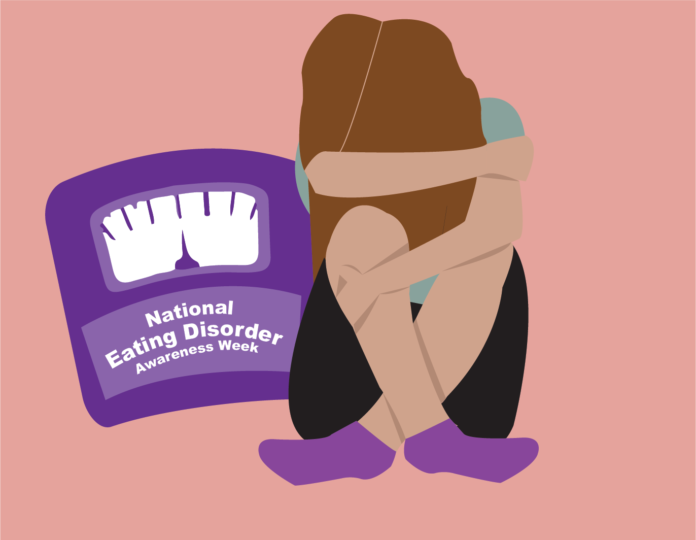The saying goes that “ignorance is bliss.” The thing about ignorance, though, is that a lack of awareness can often lead to the neglect of unaddressed issues. Undereducation or misinformation can keep people from realizing their unhealthy eating habits are a classified DSM-5 eating disorder. Healing and recovery can not begin before there is recognition of a problem.
This week is National Eating Disorder Awareness Week, and it is all too obvious that more than a single week or a single editorial is needed to address this topic. According to the National Eating Disorders Association (NEDA), “eating disorders have the second highest mortality rate of all mental health disorders, surpassed only by opioid addiction.”
Yet, due to the inadequate and glamorized portrayals in media, there are many misconceptions about eating disorders.
One of the prevailing themes across media depictions of eating disorders is the homogeneity across characters. Across T.V. shows To the Bone, Pretty Little Liars and Insatiable to cult classics including Clueless and Mean Girls, all of the characters struggling with EDs are middle-to-upper class white teenagers. In reality, women of color as well as men deal with similar struggles. A 2012 study conducted by the University of Chicago found that over 30 million Americans, ranging in age, gender and race, suffer from EDs.
By having only one image of what an ED looks like can keep people who don’t fit the Hollywood mold from realizing that they or their friends could be susceptible to developing an ED as well.
Pale, skinny women — who look like Ellen in To The Bone and Olivia in Feed — are not the only people who have EDs. Not fitting the stereotypical image is not enough to disqualify someone’s symptoms, and yet it often is.
Many people will not even consider the fact that they or a loved one may have struggle with an ED because they do not display the warning signs shown in movies: neglect to eat, rapid weight loss, extreme thinness. And while these are good symptoms to keep in mind, they are nowhere comprehensive enough.
Other behaviors associated with eating disorders also include obsessive calorie-counting, purging, excessive exercise and preoccupation with body image. While these are serious red flags that could indicate an ED, movies often write these into scenes in a humorous way, almost normalizing them.
In Mean Girls, there is an iconic scene where the three popular girls stand in front of a mirror together and take turns talking about what they hate about their bodies. “God, my hips are huge!” “Oh please, I hate my calves.” This behavior is viewed as normal, and the main character Cady Heron is chastised by her friends for not following suit. At the end of the day, Mean Girls was a satire designed to highlight the absurdity of the standards for high school popularity, but it is important to remember that young audiences may not realize that.
Similar behavior is seen in Clueless, another satirical film mocking self-absorbed Southern Californian tennargers. In Clueless, the main character Cher Horowitz refers to herself as a “heifer” and extensively logs her food, which points to body dysmorphia. Instead of addressing these behaviors as harmful, the script writes them off as humorous elements that highlight Cher’s superficiality.
Having an ED is not merely a manifestation of self-absorption or vanity. EDs are tied to “underlying triggers that are associated with depression, self-harm, trauma, interpersonal conflicts, substance abuse, low self-esteem, and anxiety,” according to Center for Discovery, an online resource for eating disorder treatment. EDs need to be treated seriously.
Counternarratives in media and everyday discussions can be the start of spreading awareness. Look for the signs, and not just among those who fit the affluent white trope. Learn about the range of disorders, which is so much broader than what T.V. shows or movies may depict. Don’t allow Hollywood to determine your understanding of eating disorders.






